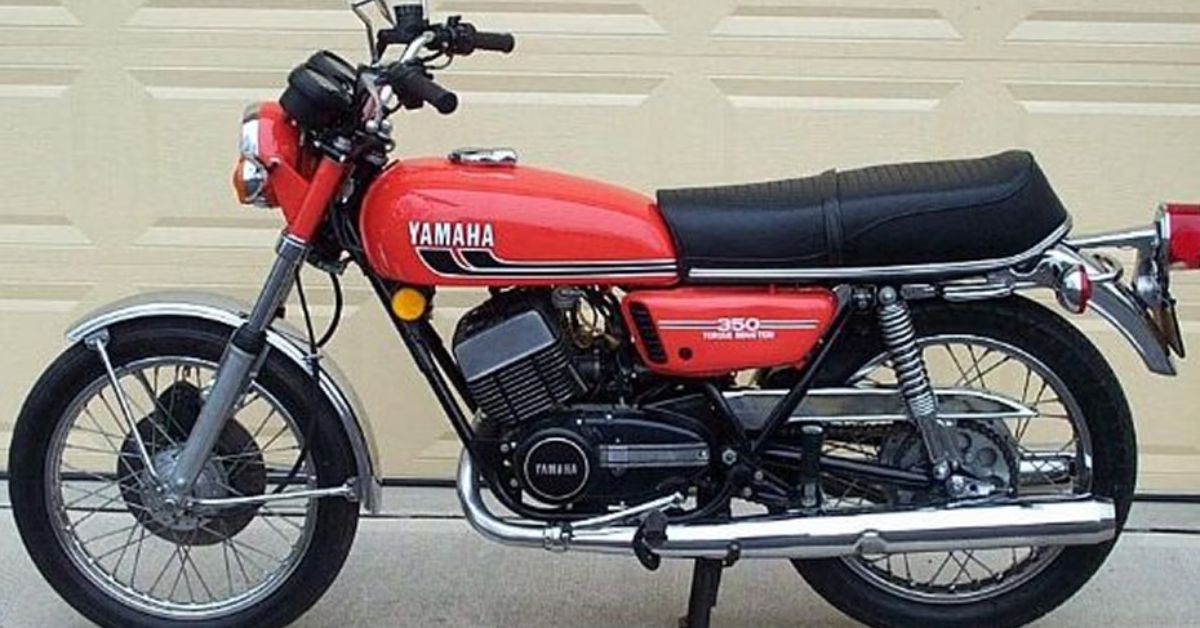In the pantheon of legendary motorcycles, few evoke as much nostalgia and reverence as the Yamaha RD350. For Indian motorcycling enthusiasts, the RD350 wasn’t just a bike—it was a revolution. Introduced in the early 1980s, it shattered conventions, redefined performance, and carved its name into the asphalt of history. Even today, decades after its production ceased, the RD350 remains a cult classic, celebrated for its raw power, distinctive exhaust note, and rebellious spirit.
🛠️ Origins of a Legend
The Yamaha RD350 was originally launched globally in 1973 as a successor to the Yamaha R5. It featured a 347cc, air-cooled, two-stroke parallel twin engine that produced a staggering 39 bhp at 7,500 rpm. With a top speed of over 160 km/h, it was a rocket on two wheels. The RD stood for “Race Derived,” a nod to its motorsport DNA and the technology borrowed from Yamaha’s racing pedigree2.
In India, the RD350 made its debut in 1983 under the Rajdoot brand, thanks to a collaboration between Yamaha and the Escorts Group. It was priced at ₹18,000—an astronomical figure at the time—and was positioned as a premium performance motorcycle in a market dominated by utilitarian commuters like the Bullet 350 and the Yezdi 250.
⚡ HT vs LT: The Torque Tale
The Indian version of the RD350 came in two variants: HT (High Torque) and LT (Low Torque). The HT edition was the original beast, producing 31 bhp. It was a handful for most riders, especially those accustomed to sedate machines. The bike’s explosive acceleration and high-revving nature made it a thrill to ride—but also a challenge to tame.
Due to concerns over fuel economy and rider safety, Yamaha introduced the LT version, which was detuned to 27 bhp. While it offered slightly better mileage and a more manageable power delivery, it still retained the RD’s signature performance edge. Fuel efficiency ranged from a dismal 6 km/l to a modest 23 km/l, depending on how aggressively it was ridden.
🚨 A Bike for the Brave
The RD350 wasn’t just fast—it was unforgiving. Its two-stroke engine delivered power in a sudden surge, often catching inexperienced riders off guard. Wheelies were common, and accidents weren’t rare. In fact, the Indian Traffic Police briefly used RD350s to chase down criminals, only to find that the bike’s ferocity was too much for standard patrol duties.
But for those who mastered it, the RD350 offered an unmatched adrenaline rush. It was a bike that demanded respect and rewarded skill. Its distinctive twin exhausts emitted a raspy, melodic growl that could be heard from blocks away—a sound that still sends shivers down the spine of enthusiasts.
🧠 Engineering Excellence
Beyond its engine, the RD350 featured a six-speed manual transmission, telescopic front forks, and dual rear shock absorbers. The Indian version had drum brakes instead of the disc brakes found on international models, a compromise made to reduce costs. Despite these changes, the RD retained its sporty geometry and lightweight frame, making it agile and responsive.
The bike’s design was minimalist yet muscular. Chrome accents, wire-spoked wheels, and a sculpted fuel tank gave it a timeless appeal. It wasn’t flashy, but it had presence—a quiet confidence that spoke volumes.
🌍 Legacy and Cult Status
Production of the RD350 in India ended in 1990, but its legacy endures. It laid the foundation for performance biking in the country and inspired a generation of riders to seek more than just transportation. It was the first bike that made people fall in love with riding for the sheer joy of speed and control.
Today, RD350s are collector’s items. Restored models fetch high prices, and dedicated clubs and forums keep the spirit alive. Owners often speak of their bikes with affection, referring to them as “crotch rockets” or “racing death”—nicknames that reflect both admiration and awe.
🏁 Final Thoughts
The Yamaha RD350 wasn’t perfect. It guzzled fuel, required frequent maintenance, and could be dangerous in the wrong hands. But it was also exhilarating, iconic, and ahead of its time. It dared to be different in a market that played it safe. And in doing so, it became a symbol of rebellion, passion, and performance.
